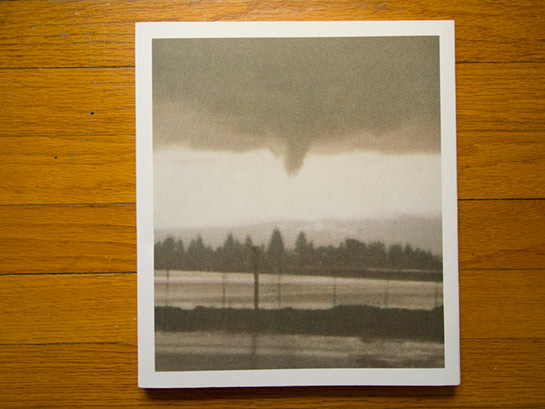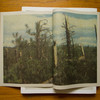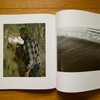Review: Lick Creek Line by Ron Jude (and a confession of love for a unique medium)

There are many different ways to tell a story in a photobook (think of “a story” as whatever it is the book wants to convey, regardless of whether there actually is a real story - “Mary had a little lamb” - or whether the aim is to transport the viewer into a particular state of mind). You can, for example, take the viewer by the hand and guide him from A to B to C, maybe like in those drawings for little children where there is a set of dots with numbers on the page, and if the child connects the dots in the correct order, a picture emerges. Or you can, as seems to have rapidly become the current hot trend, throw a bunch of dots onto the pages, to make something emerge if the viewer just looks carefully enough. In the latter case, the dots often happen to be clouds - it is, I would argue, better to think of photographs not as things that have a very clearly outlined meaning, with sharp edges. Make no mistake, one way to tell a story is not better than another one. But as I already indicated with my “trend” comment, there are periods of time when one method is en vogue. I’d be happy to argue that it’s not just about trends, it’s also about photographers learning how photographs can be used to tell stories in book form (the irony here is that the medium photobook seems much more alive right now than the medium it is derived from, photography itself). (more)
Comparisons between photography and other art forms are useful up to a certain extent. Words can be used to tell stories in all kinds of ways - fiction, non-fiction, poetry. But photographs don’t necessarily operate like words. It is tempting to think of photography as a language, but it is not. As much as comparisons to poetry are enticing, photographs are not lines in a poem, or short phrases, or even whole poems. Photographs enter the mind in different ways. Francis Bacon (the painter) talked of painting in the following way (source):
“Some paint comes across directly onto the nervous system and other paint tells you the story in a long diatribe through the brain.”Photography, it would seem, usually does both (eat your heart out, painters!), first addressing the nervous system, our instincts and fears and desires, and then telling us a story, once the part of the brain we have control over takes charge. As a matter of fact, photographs don’t tell any stories, it is us telling ourselves stories, based on them.
This has amazing repercussions for the photobook, and we have lately seen many examples of artists breaking the photobook wide open, so to speak, to explore how they tell stories, given how photographs operate. Lick Creek Line by Ron Jude provides a good case in point. I’m providing photographs of spreads from the book as part of this review, but they really only should be treated as illustrations what those look like - in no way can the way the book operates be derived from them (in other words, you might want to look at an actual, physical copy of the book to get a better idea how it works).
Following a fur trapper around his trek in the wild, Lick Creek Line tells a story, while constantly subverting it again. It is very tempting to think of photography’s inability to do certain things as its limitations; but why don’t we view it the other way around and say that these limitations are what makes photography so strong? After all, photography’s limitations create the space the medium cannot fill - and any story (to come back to the photobook) requires an empty space so the viewer/reader can find her or his place, so that the viewer/reader can insert part of her/himself.
This, for me, is the essence of photographic story-telling: To know your medium, and to trust it; to know your ability of picture-making, and to trust that where there is seemingly nothing there will be something if you’re willing to allow for that possibility. And that is why photography is a form of art: Not because the art world says so, not because the 1% pay enormous amounts of money for some photographs, not because (or despite of the fact that) we’re all photographers, but because the medium is flawed to an extent that allows, no requires us to enter part of ourselves. Produced with the help of machines, the medium is most human.
Lick Creek Line, photographs by Ron Jude, essay by Nicholas Muellner, 112 pages, Mack, 2012







